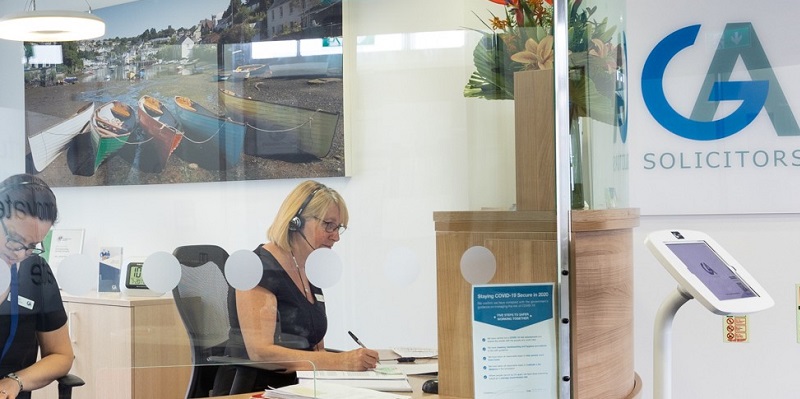
We Can Do This: Finding Professional Alignment in an Upended World
As more people face their workdays from the couch or kitchen, with children and pets in the background, and colleagues on the screen, a new normal is forming.
At the same time, the work itself has changed dramatically as travel, in-person meetings, events and speaking engagements get canceled and other responsibilities are curtailed. For both employees and managers, newly acquired time in a work week that’s always been jampacked is an opportunity to find fresh energy and focus.
James Glasnapp, social scientist, future of work expert, and consultant to Xerox PARC, shared more on how to make the most of an enforced slow-down and realign work accordingly.
Understand that working from home will feel different right now.
A required work from home setup is categorically different than the choice to work from home, said Glasnapp.
“The fantasy work from home scenario was having the freedom to travel, to open up the laptop on the beach one day and from the mountains the next,” he observed. “In today’s world, workers can’t even go to a coffee shop or a coworking space. And the great majority aren’t working from home because they asked to do so. That’s going to feel uncomfortable initially.”
Understanding that distinction can help dismantle some of employees’ unconscious expectations and help them adjust more quickly.
Ask yourself what you need to be successful.
Even in this stressful time, employees will be asked to be productive, helpful, collaborative and communicative to the extent possible. Glasnapp advised spending some time thinking about what’s needed to make sure those parameters can be met.
“Ask yourself what you need to thrive in a home environment as a professional,” he said. “This is the time to be transparent, even a little vulnerable, with your teams and management about what will work for you. This is about knowing what gives you the energy to be productive.”
For some, what fires them up and gives them the energy boost to make progress might be a weekly debrief to talk over projects and where they stand. For others, it could be a standing one-on-one with a manager or a virtual happy hour with a small group of personable colleagues. Be clear on what’s needed to do your best.
Embrace a helping mindset.
In a typical environment, managers have the duty to help their teams bring their best selves to the job. But today, they have an opportunity - and a responsibility - to step to the plate and set the tone in a whole new way with a workforce that’s still adapting.
“Now more than ever, it’s important for managers to be available to answer questions and really partner with employees to help them fulfill their potential,” said Glasnapp. “That’s especially critical early on. Managers should be laser-focused on figuring out how their team is doing in this situation and what concrete steps they, as leaders, can take to serve them.”
Asking simple, open-ended questions (e.g. “How can I help you? Are there assets you need? Do we need to change work priorities or shift things around to accommodate you?”) is a great first step. Managers should gently probe on how often employees find it useful for them to check-in. Some might like or need a daily touch-base and others may prefer a cadence that gives them more space.
Employees can do the same for the internal groups and clients they serve. “Ask how often they’d like to meet, what milestones you should mutually aim for, that kind of thing,” said Glasnapp. “Be flexible. What’s needed now might change down the line as people settle into the new working rhythm.”
Be open-minded.
Both managers and employees should reconsider expectations, said Glasnapp, and recalibrate together on what’s realistic to achieve.
“This is now about how we can make the best out of the situation,” he remarked. “As managers and employees, we can ask what the best looks like for us. We need to give ourselves permission to struggle a bit, even fail at times, and be open about what’s working and not working about working from home.”
If that honest and transparent communication takes place, it’s more likely that companies can create a productive, thriving work from home culture that centers on banding together. “You really want to create an atmosphere of coming together and being of service to one another,” Glasnapp said, noting that times of crisis create the most growth.
“When the worst of this has passed, we will all have grown and learned from this shared experience in ways that are impossible to see fully right now but that will undoubtedly be valuable.”
How are you working through your new work from home set-up as an employee or a manager?

Xerox’s Ongoing Response to COVID-19
We want to share some of the actions we have taken to keep the entire Xerox community safe while minimizing impact to our operations and yours amid this public emergency.
Related Articles

Create a more sustainable office
Discover how Xerox enables more responsible printing and sustainability strategies for businesses. Solutions, recycling, and more.

Re-imagining the workplace at GA Solicitors
Smart working from home solutions and Digital Sign-In system enables flexible working.

Cybersecurity Readiness Guide for Small and Medium Businesses
Discover how to stop hackers in their tracks. Protect your business from rising threats with Xerox's comprehensive guide. Learn essential steps to safeguard your organization, secure employee credentials, and prioritize critical data.

3 Essentials to Cybersecurity
Discover how Xerox technologies can help to secure your printer and data.

Cybersecurity Essentials
Learn how to protect your business from cybercrime. See how Xerox's guide can help improve your security with essential steps like testing passwords, examining firewalls, and analyzing employee behavior.

French Non-Profit Association Case Study
See how Xerox helped boost productivity and accessibility for one of France's most significant non-profit organizations with the help of our Managed Print Services and Workflow Central Platform.





